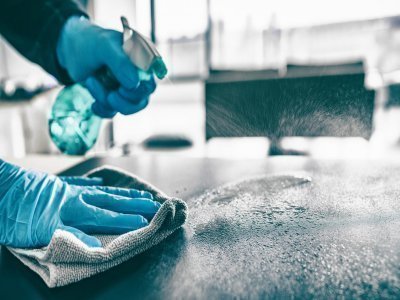Effective Cleaning and Disinfecting
Cleaning is an essential part of disinfection because dirt and grime can inactivate many disinfectants. Cleaning reduces the amount of dirt and so allows the disinfectant to work. Removal of germs such as the virus that causes COVID-19 requires thorough cleaning followed by disinfection.
Cleaning and Disinfection
Cleaning and disinfecting are two different processes:
Cleaning means physically removing germs, dirt and organic matter from surfaces.
Disinfecting means using chemicals to kill germs on surfaces. It’s important to clean before disinfecting because organic matter and dirt can reduce the ability of disinfectants to kill germs
Cleaning
Workplaces should clean surfaces at least daily. Special attention should be given to frequently touched surfaces (e.g. tabletops, door handles, light switches, desks, toilets and taps). Ideally, once clean, surfaces should also be disinfected regularly.
Surfaces should be cleaned more frequently when:
- visibly soiled
- used repeatedly by a number of people
- there has been a spillage
For routine cleaning, disinfectants are usually only necessary if a surface has been contaminated with potentially infectious material. For this reason, when and how often a workplace should undertake disinfection as part of routine cleaning will depend on the likelihood of contaminated material being present at the workplace.
Key Facts About Disinfection
- For disinfection to be effective the surface needs to be cleaned first
Some products can be both a cleaner and disinfectant (2 in 1). - The disinfection product needs to be correctly diluted
If it’s diluted too much, it won’t be effective. If it’s not diluted enough, it can increase health and safety hazards. - The disinfectant needs to achieve the required contact time with the surface
Contact time only counts if the surface is wet and may vary from 30 seconds to 10 minutes dependant on the active ingredient.
It’s also important to understand that disinfectants do not provide residual protection after they dry. A disinfected surface can be contaminated within minutes of disinfection.









